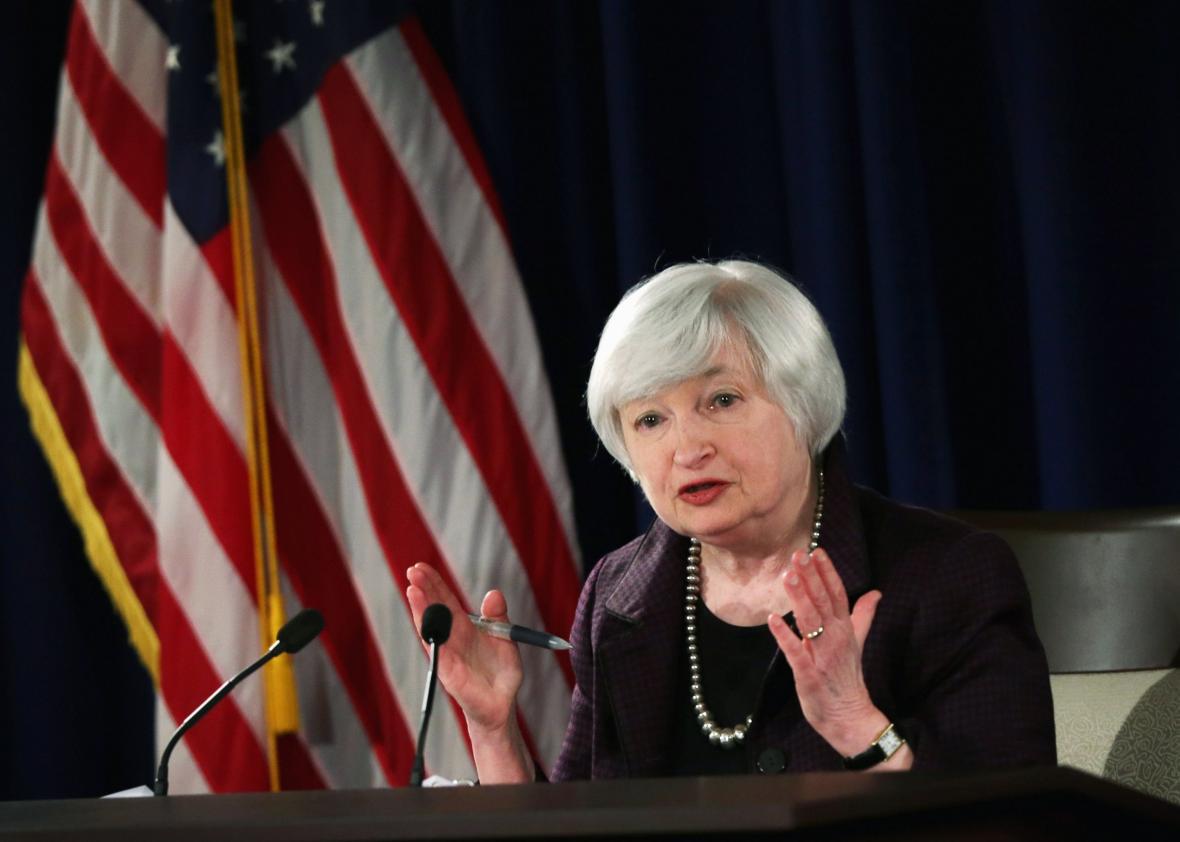Thanks in part to the recent turmoil in China and the world’s financial markets, the Federal Reserve announced Thursday that it would not raise interest rates. However, officials hinted that they still would like a hike by year’s end. The main takeaway from this largely anticipated decision is that our monetary policymakers think the economy is in fundamentally strong shape, but the global economic outlook is just dicey enough to demand some caution before doing anything with the potential to slow U.S. growth.
Or, to put it another way, Fed Chair Janet Yellen is basically an order Muppet.
After years of leaving interest rates near zero in order to support the U.S. recovery, the Fed is hoping to gradually raise them back to normal. For a while, the falling unemployment rate made it seem probable that the process would start this month. But China’s careening stock market, and the havoc it triggered elsewhere, seems to have given the Fed pause. “Recent global economic and financial developments may restrain economic activity somewhat and are likely to put further downward pressure on inflation in the near term,” the Federal Open Market Committee said in its statement.
During her press conference, Yellen elaborated that the Fed wasn’t reacting to the topsy-turvy markets themselves, but to the signals they might be sending about the underlying health of the world economy. She said that Fed board members had long anticipated a slowdown in China, but the “developments we saw in financial markets in August in part reflected concerns there were downside risks in Chinese economic performance and concerns about the deftness with which policy makers were addressing those concerns.” Translation: The People’s Republic might be in worse shape than we thought, and it’s not clear their leaders have any idea how to deal with it.
There are a few reasons why a global rough patch would make the Fed hesitant to finally hit the ignition on a rate increase, which tends to cool off the economy by making borrowing more expensive. For one, American growth has already been weighed down a bit by soft exports, and the worse things get abroad, the fewer cars, iPhones, and such we’ll be able to sell to our trade partners. Increasing rates at a time of cratering exports would be a double whammy. Then there’s the value of the dollar to worry about. The greenback already appreciated this year, which has made our exports more expensive and kept inflation lower than policymakers would like. When the Fed does raise rates, it will likely send the dollar higher, compounding those effects. And if U.S. rates rise while the rest of the world is seriously struggling, then the dollar is going to soar even more, as investors flock to it.
The Fed has reasons to hold off other than trouble overseas. For instance, low oil prices have helped keep a lid on inflation in the U.S. But ultimately, the central bank seems pretty intent on raising rates at some point this year—13 of the 17 FOMC members said they still think this year is the right time to begin ratcheting them up—because its basic outlook about the future of the economy hasn’t changed much. Yellen just wants to make sure things are calm when the tightening starts so that she doesn’t accidentally add to the tumult we’ve seen of late. I mean, she’s not an Animal.
